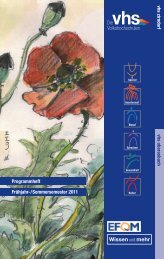Der NEUE Katalog ist da! - PRO PUBLIC GmbH
Der NEUE Katalog ist da! - PRO PUBLIC GmbH
Der NEUE Katalog ist da! - PRO PUBLIC GmbH
You also want an ePaper? Increase the reach of your titles
YUMPU automatically turns print PDFs into web optimized ePapers that Google loves.
Services<br />
Plating efficiency<br />
To get the plating efficiency, murine fibroblasts (L929) are<br />
plated into a Petri dish with 20 % serum and DMEM as<br />
basal medium in a very small density (500 cells/dish).<br />
After an incubation period of 14 <strong>da</strong>ys in an incubator at<br />
37° C and 5 % CO2 fumigation, the cell colonies are counted<br />
after Giemsa coloration (total plating efficiency). The results<br />
are normalized against a further tested reference serum<br />
(relative plating efficiency).<br />
Cloning efficiency<br />
The cloning efficiency shows the ability of a serum lot to<br />
support the cloning and the growth of murine myeloma<br />
cell line and derived hybridoma lines. Therefore SP2/0-<br />
Ag14 cells (murine myeloma) are plated on microtiter<br />
plates (one cell per well) with 20 % serum and RPMI 1640<br />
as basal medium in a very small density. After 7 <strong>da</strong>ys in<br />
an incubator at 37° C and 5 % CO2 fumigation the cell colonies<br />
are counted (total cloning efficiency). The results<br />
are normalized against a further tested reference serum<br />
(relative cloning efficiency).<br />
Growth test<br />
In this assay the ability of a serum lot to support the proliferation<br />
of murine fibroblasts (L929) and murine myeloma<br />
cells (SP2/0-Ag14) is searched. The cells are plated at a<br />
relative low density of 1.000 cells/ml for SP2 and 10.000<br />
cells/ml for L929. After an incubation at 37° C and 5 %<br />
CO2 fumigation cells are counted in a metering chamber<br />
on the second, fifth and seventh <strong>da</strong>y. A control culture is<br />
carried along the test.<br />
Establishment and expansion of special cell cultures<br />
Primary human cells from many different tissues are isolated<br />
and cultured under the required conditions.<br />
Development of cell specific media<br />
for unique applications<br />
Serumfree and proteinfree media (growth media, differentiation<br />
media) are developed and optimized for many different<br />
cell lines and primary cells according to the special<br />
application.<br />
Purchasing and processing of special cells<br />
Isolation, cultivation and incubation of special cells according<br />
to the customer‘s request.<br />
BIOTECH <strong>GmbH</strong><br />
<br />
5.4<br />
Dienstle<strong>ist</strong>ungen<br />
Functional Tests/Funktionale Testungen<br />
Cell Processing/Zellprozessing<br />
Platierungseffizienz<br />
Zur Bestimmung der Plattierungseffizienz werden Maus<br />
Fibroblasten (L929) in einer sehr geringen Zelldichte in<br />
Petrischalen mit 20 % Serum und DMEM als Grundmedium<br />
eingesät (500 Zellen/Platte). Nach einer Inkubation von<br />
14 Tagen im Brutschrank bei 37° C und 5 % CO2-Begasung<br />
werden die Zellkolonien nach Giemsa Färbung ausgezählt<br />
(absolute Plattierungseffizienz). Die Ergebnisse werden<br />
gegen ein vorher ausgetestetes Referenzserum normalisiert<br />
(relative Plattierungseffizienz).<br />
Klonierungseffizienz<br />
Die Klonierungseffizienz zeigt die Fähigkeit einer Serumcharge,<br />
die Klonierung und <strong>da</strong>s Wachstum einer Maus<br />
Myeloma-Zelllinie und <strong>da</strong>von abgeleitete Hybridomalinien<br />
zu unterstützen. Dazu werden SP2/0-Ag14 Zellen (Maus<br />
Myeloma) in einer sehr geringen Zelldichte (eine Zelle pro<br />
Vertiefung) in Microtiterplatten mit 20 % Serum und RPMI<br />
1640 als Grundmedium eingesät. Nach einer Inkubation<br />
von 7 Tagen im Brutschrank bei 37° C und 5 % CO2-Begasung<br />
werden die Zellkolonien ausgezählt (absolute Klonierungseffizienz).<br />
Die Ergebnisse werden gegen ein vorher<br />
ausgetestetes Referenzserum normalisiert (relative Klonierungseffizienz)<br />
Wachstumstest<br />
In diesem Assay wird die Fähigkeit einer Serumcharge bestimmt,<br />
die Proliferation von Maus Fibroblasten (L929)<br />
und Maus Myeloma Zellen (Sp2/0-Ag14) zu unterstützen.<br />
Die Zellen werden in einer relativ niedrigen Dichte von<br />
1000 Zellen/ml für Sp2 und 10000 Zellen/ml für L929<br />
eingesät. Nach einer Inkubation im Brutschrank bei 37° C<br />
und 5 % CO2-Begasung werden die Zellen am 2., 5. und 7.<br />
Tag in einer Zählkammer ausgezählt. Eine Kontrollkultur<br />
mit ausgetestetem Serum wird bei jedem Test mitgeführt.<br />
Etablierung und Expansion spezieller Zellkulturen<br />
Primäre humane Zellen aus den verschiedensten Gewebearten<br />
werden isoliert und in Kultur genommen.<br />
Entwicklung spezifischer Zellmedien<br />
für besondere Applikationen<br />
Serumfreie bzw. proteinfreie Medien (Wachstumsmedien,<br />
Differenzierungsmedien) werden für viele Zelllinien und<br />
primäre Zellen entwickelt und optimiert.<br />
Beschaffung und Aufarbeitung spezieller Zellen<br />
Isolierung, Kultivierung und Vermehrung spezieller Zellen<br />
nach Kundenanfrage.<br />
4<br />
5





